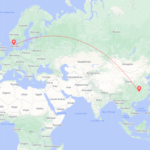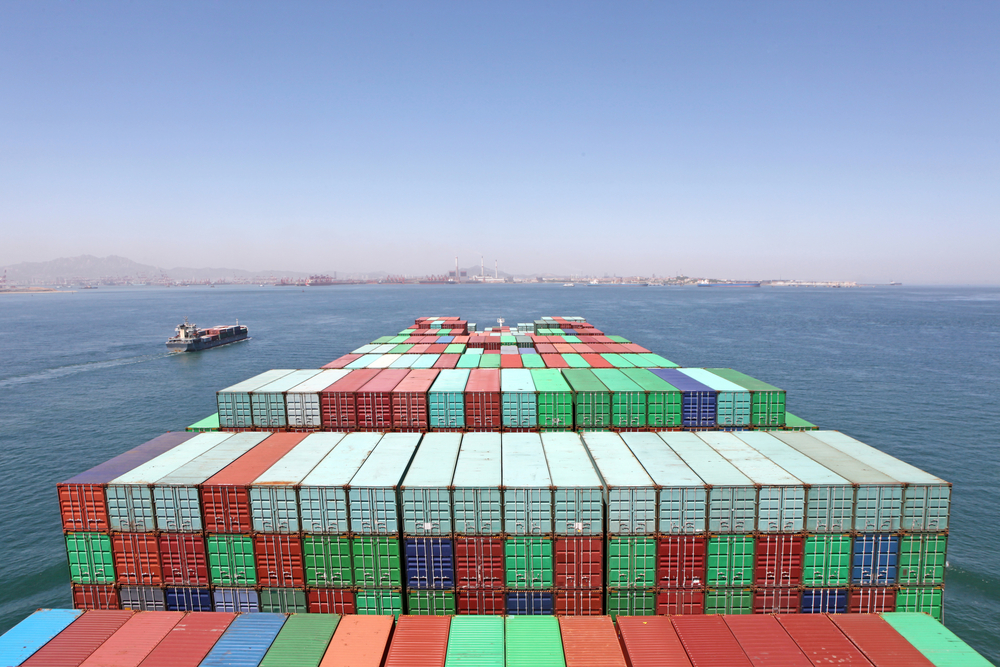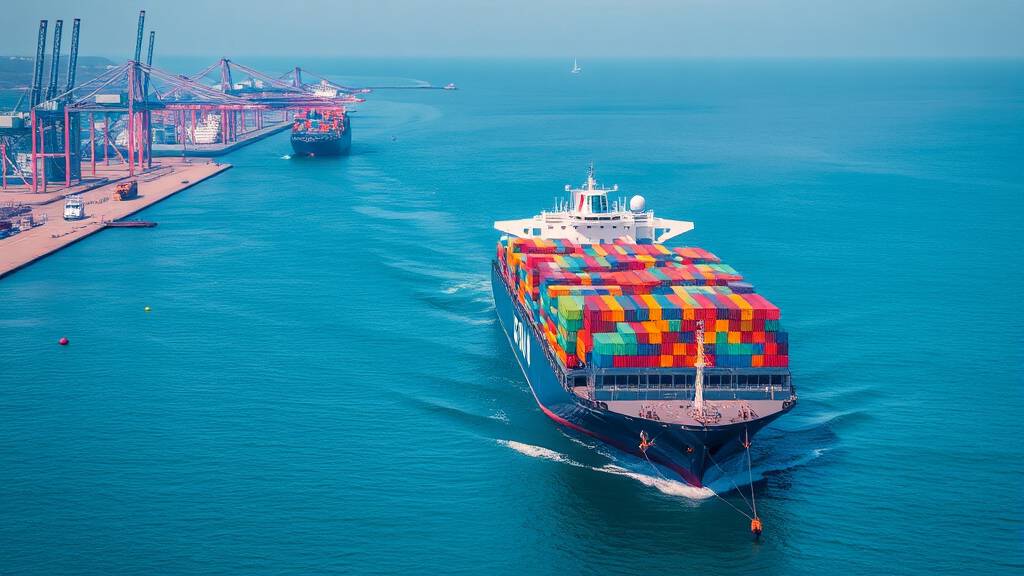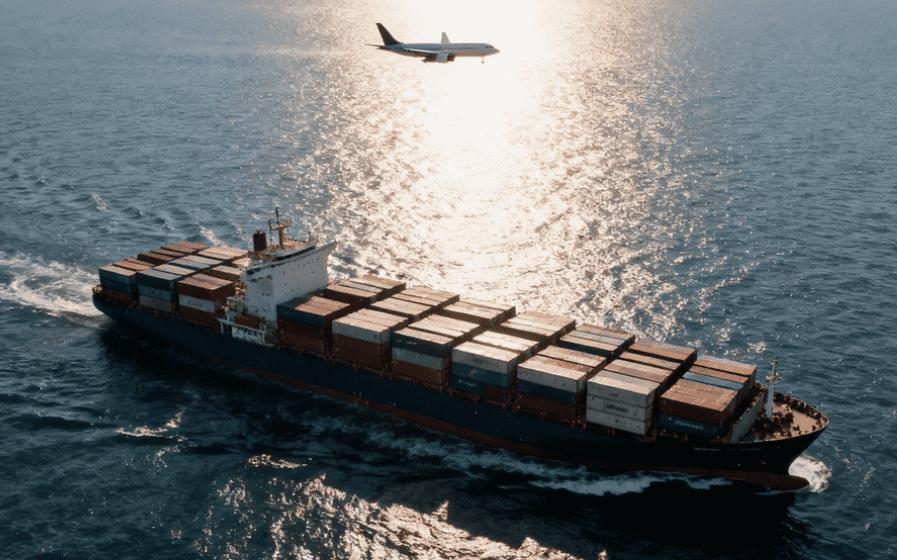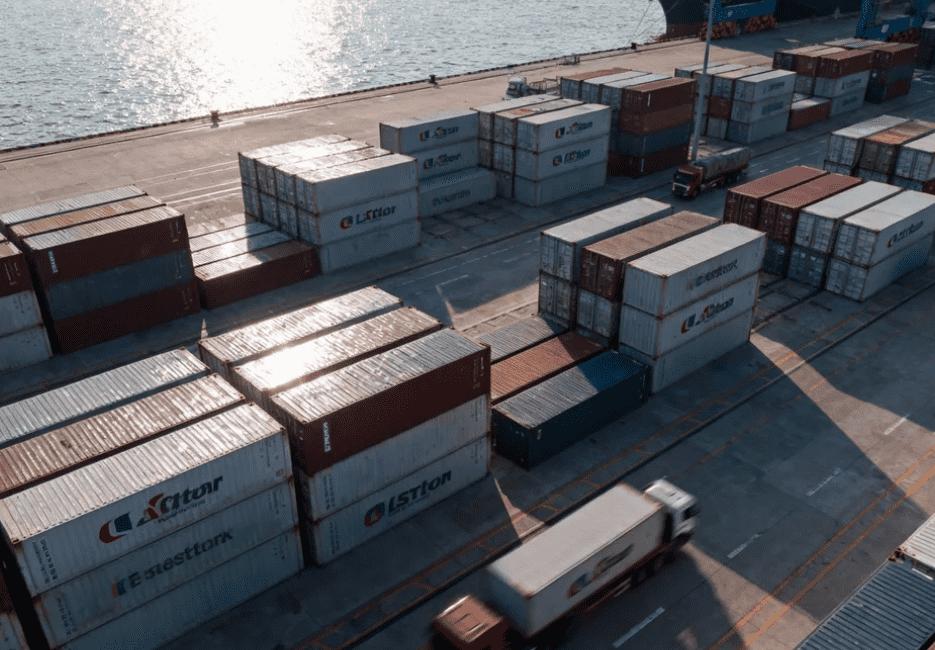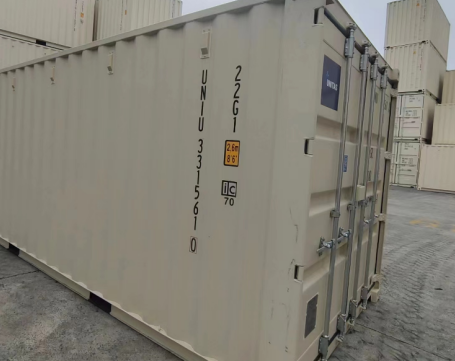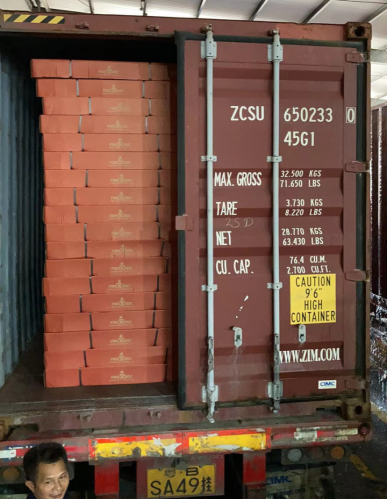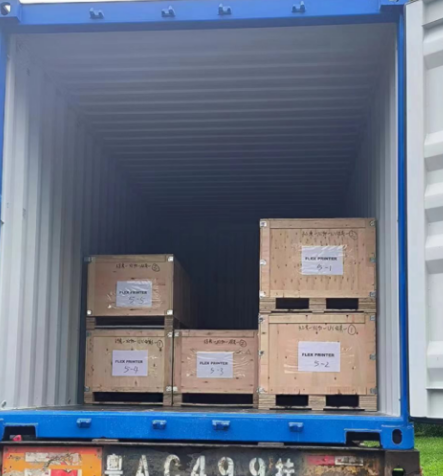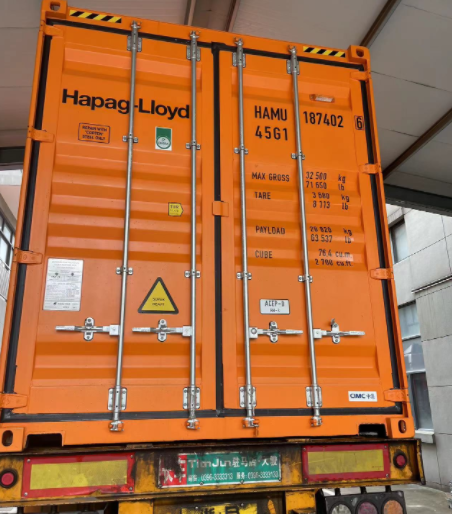Are you curious about the container shipping costs from China to Denmark?Understanding these expenses is crucial for businesses and individuals looking to import goods efficiently.
In this article, we will delve into the intricacies of shipping costs, covering key factors that influence them, such as shipping routes, container sizes, and modes of transport. In this comprehensive guide, we will also break down the costs associated with both 20ft and 40ft containers, additional fees, and effective strategies to reduce shipping expenses.
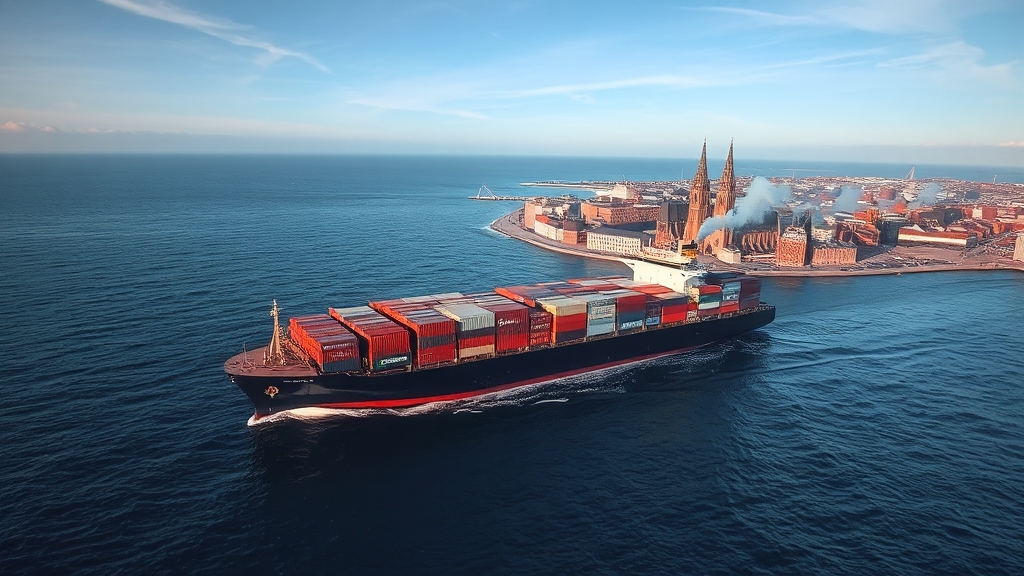
Understanding Container Shipping Costs from China to Denmark
When it comes to container shipping from China to Denmark, understanding the various costs involved is critical for importers and businesses looking to optimize their logistics budget. Container shipping charges can fluctuate based on a number of factors, including the type of service used, the specific ports of departure and arrival, as well as the overall demand for shipping in a given period. By gaining a comprehensive understanding of these costs, businesses can make informed decisions and effectively manage their shipping expenses.
In the world of international logistics, container shipping is one of the most popular methods of transport due to its cost-effectiveness, especially for bulk goods. However, the intricacies of calculating shipping costs can be overwhelming for newcomers. Therefore, it is essential to work with a reliable freight forwarder, such as Dantful International Logistics, to navigate through the complexities of shipping from China to Denmark. You can learn more about their services here.
Key Factors Influencing Shipping Costs
Understanding the key factors that influence container shipping costs is crucial for businesses looking to import goods. Below are the most significant considerations:
Shipping Route and Distance
The shipping route taken from China to Denmark plays a pivotal role in determining overall shipping costs. Major ports in China, such as Shanghai, Shenzhen, and Ningbo, offer different routes and transit times to various Danish ports, including Copenhagen, Aarhus, and Esbjerg. Generally, the greater the distance between the ports, the higher the shipping costs will be due to fuel and operational expenses.
Additionally, seasonal factors can impact shipping routes. For instance, during peak shipping seasons, such as the lead-up to major holidays, there is often increased demand for container space, which can drive up costs. Therefore, understanding the shipping route and any potential disruptions can help businesses better anticipate their costs. For more details on shipping routes, visit Shipping Routes from China to USA.
Container Size: 20ft vs. 40ft
The size of the container being shipped is another crucial factor that affects shipping costs. The two most common container sizes are 20ft and 40ft. Here’s a brief comparison of each:
| Container Size | Dimensions (ft) | Typical Capacity (CBM) | Average Cost |
|---|---|---|---|
| 20ft | 20′ x 8′ x 8.5′ | 28-30 | Lower |
| 40ft | 40′ x 8′ x 8.5′ | 56-60 | Higher |
In terms of cost, 40ft containers generally offer a better cost per cubic meter for larger shipments but may represent a higher upfront shipping cost. Therefore, businesses should evaluate their shipping volume and select the appropriate container size to optimize their logistics costs. You can explore more about container shipping costs here.
Mode of Transport: FCL vs. LCL
The mode of transport chosen significantly influences container shipping costs. Full Container Load (FCL) and Less than Container Load (LCL) are two prevalent shipping options.
FCL is ideal for businesses that can fill an entire container with their goods. This option is usually more cost-effective for larger shipments, as the cost is based on the full container rather than the volume of goods shipped.
LCL is more suitable for smaller shipments, where the goods do not fill an entire container. The costs for LCL shipping are calculated based on the volume of the goods, but they tend to be higher per cubic meter due to the need for consolidation. Understanding the difference between these options is key; you can learn more about what is LCL and FCL in shipping.
| Mode of Transport | Cost Implications | Ideal For |
|---|---|---|
| FCL | Lower per cubic meter for large shipments | Full container loads |
| LCL | Higher per cubic meter; consolidation fees apply | Smaller shipments |
Choosing between FCL and LCL will depend on the volume of goods to be shipped and the urgency of the delivery. Importers should assess their needs carefully to select the most cost-effective solution. Partnering with Dantful International Logistics can help streamline this decision-making process, ensuring optimal solutions tailored to your specific needs in shipping from China to Denmark.
Shipping Costs for Containers from China to Denmark
When importing goods from China to Denmark, understanding the shipping costs is paramount for effective budgeting. Various factors contribute to these costs, including container size, mode of transport, and additional charges. Below is a detailed breakdown of shipping costs for 20 ft and 40 ft containers, as well as a comparison between Full Container Load (FCL) and Less than Container Load (LCL) shipping.
20 ft Container Shipping Cost from China to Denmark
The average shipping cost for a 20 ft container from China to Denmark usually ranges from $1,200 to $2,500 depending on various factors such as the port of departure, shipping route, and current market rates.
Cost Breakdown for 20ft Containers
| Item | Estimated Cost (USD) |
|---|---|
| Base Freight Cost | $1,200 – $2,000 |
| Port Fees | $150 – $300 |
| Insurance | $100 – $200 |
| Customs Clearance Fees | $200 – $400 |
| Miscellaneous Charges | $100 – $200 |
| Total Estimated Cost | $1,850 – $3,300 |
This breakdown shows that while the base freight cost is a significant part of the total, additional fees can accumulate quickly.
40 ft Container Shipping Cost from China to Denmark
For 40 ft containers, shipping costs are typically higher due to the increased volume. The average cost ranges from $2,000 to $3,500.
Cost Breakdown for 40ft Containers
| Item | Estimated Cost (USD) |
|---|---|
| Base Freight Cost | $2,000 – $3,000 |
| Port Fees | $200 – $400 |
| Insurance | $150 – $300 |
| Customs Clearance Fees | $300 – $500 |
| Miscellaneous Charges | $150 – $250 |
| Total Estimated Cost | $3,000 – $4,900 |
As you can see, the costs for a 40 ft container can be significantly higher, primarily due to the larger capacity and additional handling required.
Comparison of FCL and LCL Shipping Costs
When evaluating shipping options, it’s essential to consider the differences between Full Container Load (FCL) and Less than Container Load (LCL).
| Type | Description | Estimated Cost (USD) |
|---|---|---|
| FCL | Exclusive use of a full container | $1,850 – $4,900 |
| LCL | Shared container space, costs divided among shippers | $300 – $1,500 |
FCL is generally more cost-effective for larger shipments, while LCL is suitable for smaller loads. Choosing the right option depends on shipment size and frequency.
Read More:
- Shipping From China To Netherlands
- Shipping From China To Spain
- Shipping From China To Germany
- Shipping From China To France
- Shipping From China to Italy
- Shipping From China To Poland
- Shipping From China to United Kingdom
Additional Fees and Charges
In addition to the base shipping costs, other fees can impact your overall expenses when importing goods from China to Denmark.
Port Fees and Handling Charges
When shipping containers, various port fees and handling charges apply. These can include:
- Loading and unloading fees: Charged by the port authority for moving containers in and out of the port.
- Storage fees: Incurred if containers are stored at the port beyond a certain period.
- Terminal handling charges: Fees associated with the handling of containers at the terminal.
These costs can range from $150 to $500, depending on the port and duration of handling.
Customs Duties and Taxes
Upon arrival in Denmark, shipments are subject to customs duties and taxes. Customs duties vary depending on the type of goods imported and their value. Typically, the VAT (Value Added Tax) in Denmark is 25%, applied to the customs value of the goods, including shipping costs and insurance.
It’s crucial to account for these additional fees when calculating the total cost of shipping from China to Denmark.
In summary, understanding the full scope of container shipping costs is vital for anyone looking to import goods from China to Denmark. Utilizing a professional freight forwarder like Dantful International Logistics can help navigate these complexities and ensure a smooth shipping process, offering a comprehensive range of services including ocean freight and customs clearance. For more information on costs, check out the cheapest shipping company from china to denmark and consider options like door to door shipping from China to Denmark.
Shipping Time from China to Denmark
Average Transit Times for Sea Freight
When considering container shipping from China to Denmark, the average transit time greatly impacts your supply chain planning. Typically, the transit time for ocean freight can range from 25 to 45 days, depending on factors such as the shipping route and the specific port of departure in China.
Here’s a breakdown of average transit times based on some major Chinese ports:
| Port of Departure | Average Transit Time to Denmark |
|---|---|
| Shanghai | 30-35 days |
| Shenzhen | 28-33 days |
| Ningbo | 32-40 days |
| Guangzhou | 35-42 days |
| Tianjin | 30-38 days |
These transit times are approximate and can vary based on the shipping line and the specific route taken. For example, shipments from Shanghai to Copenhagen may take longer if they involve multiple stops or transshipments.
Factors Affecting Shipping Duration
Several factors can influence the overall shipping duration when transporting containers from China to Denmark:
Routing and Distance: The chosen shipping route can affect transit time. Direct routes are generally faster, while those with transshipments can add days to the overall duration.
Vessel Schedule: The availability of vessels and the frequency of sailings from specific ports can also impact shipping times. Some routes may have limited schedules, leading to longer waiting periods.
Weather Conditions: Seasonal weather patterns, such as typhoons or storms, can delay shipments. Ports may also experience closures or restrictions due to adverse weather conditions.
Customs Clearance: Delays during customs checks, both in China and Denmark, can extend the shipping duration. Proper documentation and compliance with regulations can help mitigate these delays.
Port Congestion: Major ports can experience congestion due to high traffic volumes. This may lead to longer unloading and loading times, thus affecting overall shipping duration.
Tips for Reducing Container Shipping Costs
Choosing the Right Freight Forwarder
Selecting an experienced freight forwarder is crucial for minimizing shipping costs and ensuring a smooth logistics process. Here are some tips for choosing the right partner:
Expertise in China-Denmark Routes: Opt for a freight forwarder like Dantful International Logistics, which has specialized knowledge of shipping from China to Denmark. This expertise can help you navigate the complexities of international shipping.
Cost-Effectiveness: Compare quotes from multiple freight forwarders to ensure you are getting competitive rates. A reliable forwarder will provide transparent pricing without hidden fees.
Service Variety: A good freight forwarder should offer comprehensive services, including ocean freight, customs clearance, and door-to-door delivery. This can streamline your shipping process and reduce the need for multiple service providers.
Consolidating Shipments for Cost Efficiency
Consolidating shipments is an effective strategy to reduce overall shipping costs. Here’s how to do it:
Utilize Less-than-Container Load (LCL): If you do not have enough cargo to fill a full container, opting for LCL shipping allows you to share container space with other shipments, significantly lowering costs.
Combine Orders: If you regularly import goods, consider combining orders from multiple suppliers into a single shipment. This can maximize container space and reduce per-unit shipping costs.
Plan Ahead: By planning your shipments well in advance, you can take advantage of lower rates during off-peak seasons. This approach also allows for better scheduling, reducing the risk of delays.
Work with Dantful International Logistics: As a highly professional and cost-effective logistics provider, Dantful offers tailored solutions that can help you optimize your shipping strategy, ensuring you save on costs while maintaining high service quality.
By understanding shipping times, factors affecting duration, and strategies for reducing costs, you can make informed decisions that enhance your import experience from China to Denmark. For more details on shipping options, explore Shipping From China to Denmark and freight forwarder from china to Denmark.

Young Chiu is a seasoned logistics expert with over 15 years of experience in international freight forwarding and supply chain management. As CEO of Dantful International Logistics, Young is dedicated to providing valuable insights and practical advice to businesses navigating the complexities of global shipping.


